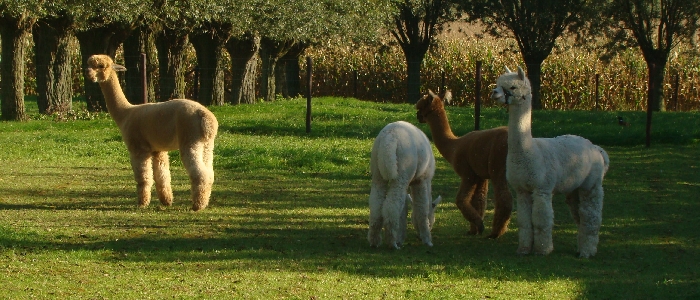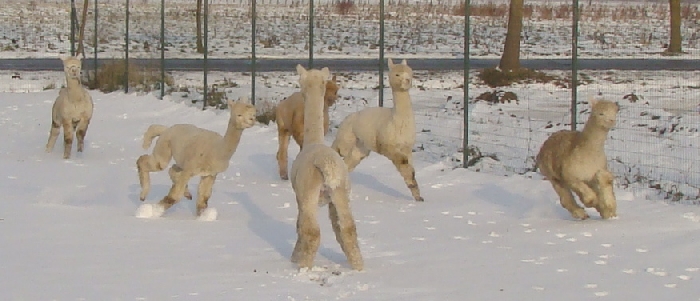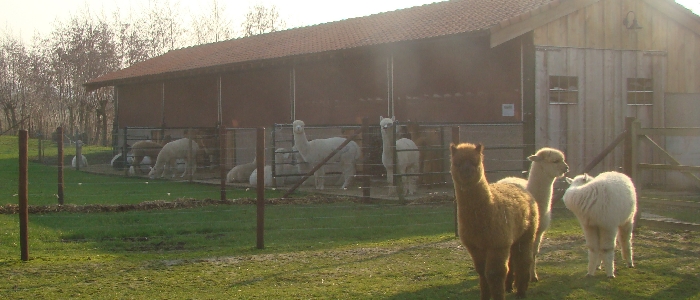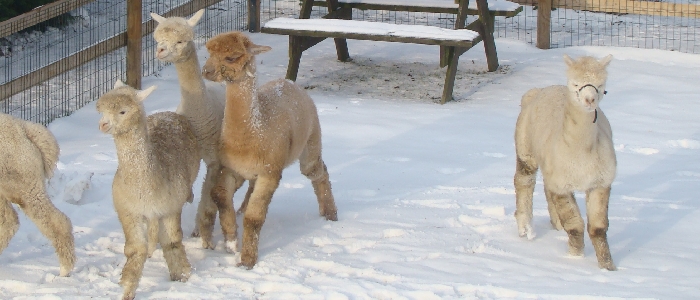Voeding en Zwangerschap
NUTRITION AND PREGNANCY
By Nic Cooper, Southern Alpacas Stud
The topic of alpaca nutrition is a long and involved one ranging from water intake, through requirements in crude protein, fiber, energy, trace minerals and vitamins.
And many of these vary with the location of the farm, the type of feed, the fertilisers used, and the state (age, working male, pregnancy etc) of the alpaca.
At Southern Alpacas we have developed a "nutrition bible" that drives farm and alpaca management. We concentrate on ensuring the alpaca requirements are met as much as possible from the soil and grasses of the farm. We may supplement orally (through feed) at times. We try to avoid supplementation through injection or specific oral supplement.
One particular aspect is the linkage between nutrition and the pregnant alpaca.
Alpacas get pregnant easier on a rising plane of nutrition. For many alpacas, getting pregnant is also when they are feeding a young cria. Hence their nutritional requirements are crucial in this period.
We move dams to their birthing area 5-6 weeks before they are due to birth, and update their 5 in 1 and ADE inoculations. We ensure the birthing paddock has plenty of good quality grass and we sow a higher nutritional level of grasses in the birthing paddock.
When in the birthing area we supplementary feed McMillan lactating chaff, which is specially designed to meet the alpaca dam’s intake for crude protein, energy, fibre, tdn (total digestible nutrient), and minerals.
The nutritional aspect of the female alpaca during pregnancy is critical to the health and longer term production capability of the cria.
Alpacas normally require an 8% crude protein diet, which they more than achieve from proper NZ grasses without supplementation.
The situation changes when the dam gets to the latter stages of pregnancy, and also in the first weeks of lactation. At that time a crude protein intake of 12% - 15% is required. This requires the best paddocks, and/or supplementation.
From a management point of view, late gestation (when the cria is maximising growth and developing its secondary fibre follicles) and the first 4 weeks of lactation (when the dam reaches peak lactation) are critical.
Fed properly at this period you achieve:
? A better secondary to primary follicle growth ratio - something that will effect the fibre production of the cria throughout its life.
? A healthier birthed cria.
? A cria that grows well in early weeks (which affects later growth, and potential mating ages).
? A dam on a rising plane of nutrition for her next mating.
The only downside may be a larger cria for smaller maiden alpacas - and some birthing assistance required, although we have found that alpaca dams tend to birth early if the cria is "ready" early
Fat alpacas are usually more of a problem in NZ than thin ones. If you regularly body score your alpacas (see body scoring article) you will identify those that are naturally thin, or obese. Like humans the natural state can vary by alpaca.
When we recognise a thin alpaca - or one clearly losing weight - segregation in a smaller herd unit of similar alpacas, and high crude protein (lactating mix) supplementation soon reverses the decline. If it does not, look for other medical reasons.
Fat alpacas are generally harder to get pregnant and suffer more birthing difficulties. And getting an alpaca to lose weight is almost impossible! It involves a prolonged regime of controlled feed intake, and increased exercise.
[2009-02-23 door Nic Cooper]







